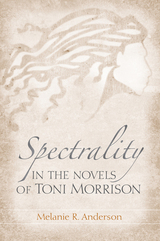2 books about Future life in literature

Paradise Earned
The Bacchic-Orphic Gold Lamellae of Crete
Yannis Tzifopoulos
Harvard University Press, 2010
This is a study of the twelve small gold lamellae from Crete that were tokens for entrance into a golden afterlife: the deceased who were buried or cremated with them believed that they had 'earned Paradise.' The lamellae are placed within the context of a small corpus of similar texts, and published with extensive commentary on their topography, lettering and engraving, dialect and orthography, meter, chronology, and usage. The texts reveal a hieros logos whose poetics and rituals are not much different from Homeric rhapsodizing and prophetic discourses. Cretan contexts, both literary and archaeological, are also brought to bear on these incised objects and on the burial custom involved. Finally, this work adduces parallels to the texts on the lamellae from the Byzantine period and modern Greece to illuminate the everlasting and persistent human quest for 'earning Paradise.'
[more]

Spectrality in the Novels of Toni Morrison
Melanie R. Anderson
University of Tennessee Press, 2013
At first glance, Beloved would appear to be the only “ghost story” among Toni Morrison’s nine novels, but as this provocative new study shows, spectral presences and places abound in the celebrated author’s fiction. Melanie R. Anderson explores how Morrison uses specters to bring the traumas of African American life to the forefront, highlighting histories and experiences, both cultural and personal, that society at large too frequently ignores.
Working against the background of magical realism, while simultaneously expanding notions of the supernatural within American and African American writing, Morrison peoples her novels with what Anderson identifies as two distinctive types of ghosts: spectral figures and social ghosts. Deconstructing Western binaries, Morrison uses the spectral to indicate power through its transcendence of corporality, temporality, and explication, and she employs the ghostly as a metaphor of erasure for living characters who are marginalized and haunt the edges of their communities. The interaction of these social ghosts with the spectral presences functions as a transformative healing process that draws the marginalized figure out of the shadows and creates links across ruptures between generations and between past and present, life and death. This book examines how these relationships become increasingly more prominent in the novelist’s canon—from their beginnings in The Bluest Eye and Sula, to their flowering in the trilogy that comprises Beloved, Jazz, and Paradise, and onward into A Mercy.
An important contribution to the understanding of one of America’s premier fiction writers, Spectrality in the Novels of Toni Morrison demonstrates how the Nobel laureate’s powerful and challenging works give presence to the invisible, voice to the previously
silenced, and agency to the oppressed outsiders who are refused a space in which to narrate their stories.
Melanie R. Anderson is an Instructional Assistant Professor of American Literature at the University of Mississippi.
Working against the background of magical realism, while simultaneously expanding notions of the supernatural within American and African American writing, Morrison peoples her novels with what Anderson identifies as two distinctive types of ghosts: spectral figures and social ghosts. Deconstructing Western binaries, Morrison uses the spectral to indicate power through its transcendence of corporality, temporality, and explication, and she employs the ghostly as a metaphor of erasure for living characters who are marginalized and haunt the edges of their communities. The interaction of these social ghosts with the spectral presences functions as a transformative healing process that draws the marginalized figure out of the shadows and creates links across ruptures between generations and between past and present, life and death. This book examines how these relationships become increasingly more prominent in the novelist’s canon—from their beginnings in The Bluest Eye and Sula, to their flowering in the trilogy that comprises Beloved, Jazz, and Paradise, and onward into A Mercy.
An important contribution to the understanding of one of America’s premier fiction writers, Spectrality in the Novels of Toni Morrison demonstrates how the Nobel laureate’s powerful and challenging works give presence to the invisible, voice to the previously
silenced, and agency to the oppressed outsiders who are refused a space in which to narrate their stories.
Melanie R. Anderson is an Instructional Assistant Professor of American Literature at the University of Mississippi.
[more]
READERS
Browse our collection.
PUBLISHERS
See BiblioVault's publisher services.
STUDENT SERVICES
Files for college accessibility offices.
UChicago Accessibility Resources
home | accessibility | search | about | contact us
BiblioVault ® 2001 - 2024
The University of Chicago Press









